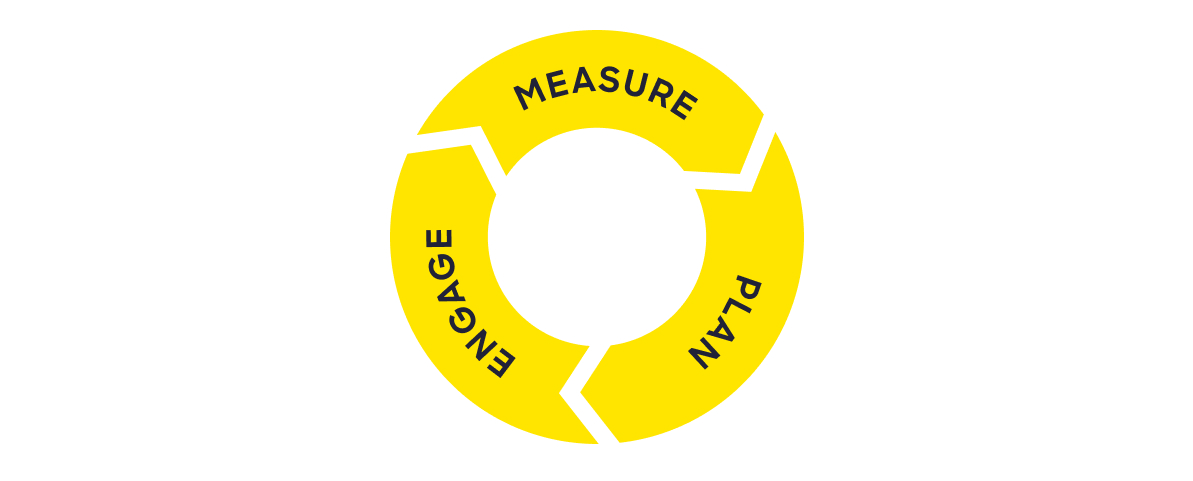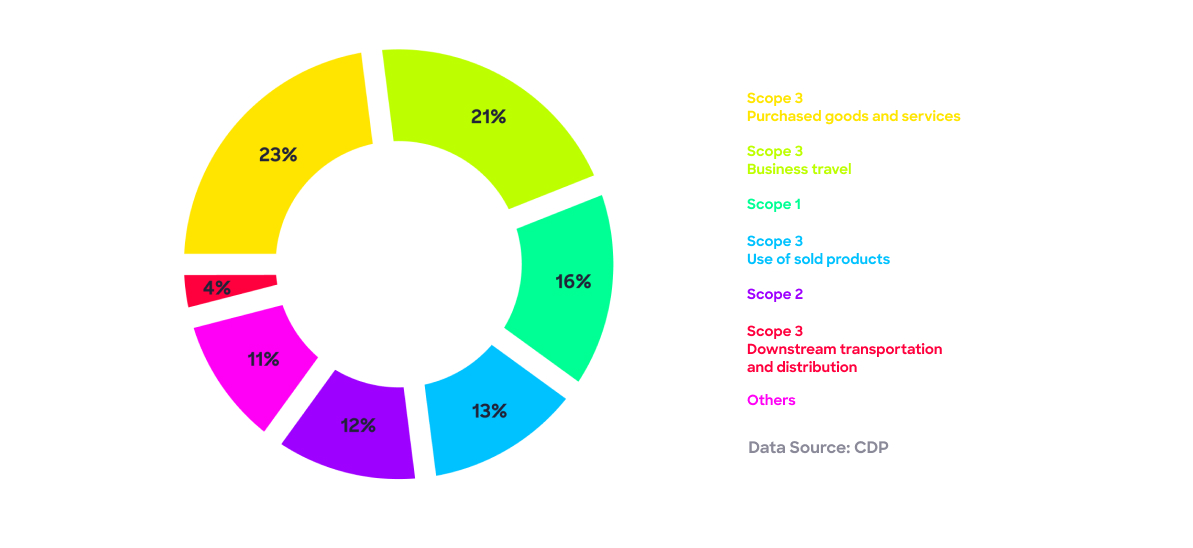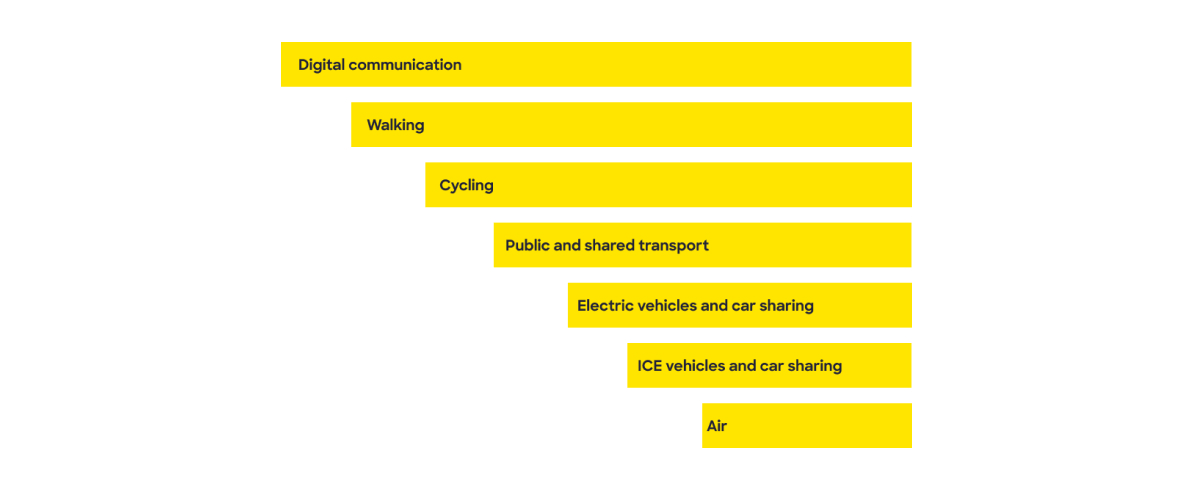Best Practice Guide for SMEs - how to address your business travel emissions

To address your business travel emissions, you first need to measure your emissions, make a plan to reduce them and then engage your employees to implement the plan.
This is an iterative cycle.

Step 1: measure your emissions
Measuring your emissions is an important first step for any sustainability policy, including business travel. The Greenhouse Gas Protocol (GHG) sets out three main ways to calculate your business travel emissions:
- Fuel: based on the amount of fuel consumed during business travel.
- Distance: based on the distance travelled and mode of business travel used for trips.
- Spend: based on the amount of money spent on each mode of business travel (note – you can’t use this for air travel).
You can do this calculation as a one-off using expenses or receipts, but it’s best to set up a way to capture this information centrally on an ongoing basis.
This is an example emissions breakdown for an average SME (2019):

Once you’ve measured your emissions, you need to set a target. The SBTi’s Corporate Net-Zero Standard is the best framework for setting net-zero targets in line with climate science. Net Zero requires emissions reductions of 90-95%.
Step 2: make a plan
Most companies implement a business travel reduction plan through a green travel policy.
Compliance is a challenge so travel policies need to be implemented carefully, and address the needs and requirements of your travellers. Start by setting up a working group of frequent travellers.
Here are some great examples of green travel policies from other organisations:
Your travel policy will include all aspects of travel, from how to book to how to expense travel. Here are some green initiatives you could think about including:
- Set carbon travel budgets in line with your targets for individuals, trips, or teams
- Approvals required before a flight, or carbon intensive trip, is booked
- Guidance on how employees should balance how long a journey takes vs the mode of travel
- Advice on the type and location of hotel employees book (e.g. a list of green hotels to choose from, or tools that help you choose greener hotels)
- Advice on how employees should prioritise financial cost vs sustainable cost
- Offset the impact of essential travel to make your travel carbon neutral
- Use the travel hierarchy – a useful tool to help everyone think about reducing the impact of their travel
- Encourage using a booking tool that helps you implement the travel hierarchy, as well as helping you to capture your travel data centrally
The sustainable travel hierarchy is a useful tool to help you think about improving the impact of your business travel. The higher up the hierarchy, the more sustainable and greener the travel option:

Step 3: engage your employees
Company wide targets are always much harder to achieve when people don’t understand how their own actions can support the overall goal. Educate your travellers on what the organisation is trying to achieve and the role they play in making it happen.
Top engagement tips:
- Listen to what your travellers want, get them involved in shaping your green travel policy from the start.
- Provide tools which your employees want to use, not are forced to use.
- Show travellers the positive impact they’re having on a regular basis.
How to start your net zero travel journey today

Measure: start capturing the data from your travel and accommodation emissions. You can do this manually, through expenses and receipts, or through platforms like Staze that help you capture this data automatically.
Plan: design your green travel policy with your employees who travel the most.
Engage: Influence your employees to make more sustainable choices at the moments that are key for decision making. Give them tools they love to use, and share engaging content to remind them of your green travel policy. For example, Staze is a hotel booking platform that travellers love to use while also helping them to book lower carbon footprint hotels.
Find out more about why you should be addressing your business travel emissions in our Introduction to Business Travel Emissions for SMEs here.

